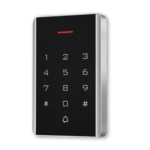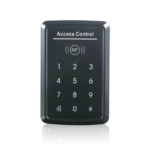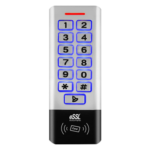Standalone access controllers are self-contained electronic devices that manage access to a single door or entry point without requiring connection to a central server or network. They offer a basic, yet effective way to control who can enter a specific area.
Reader: Accepts credentials such as keycards, fobs, or PIN codes. | Controller: Processes credentials and unlocks the door if authorized. | Lock: Secures the door, typically an electric strike or magnetic lock. | Power supply: Provides power to the system.A Standalone access controller is a specialized device used to control access to a restricted area or facility independently, without the need for a centralized access control system. It offers a standalone solution for managing entry and exit points, making it a versatile option for small to medium-sized installations.
The standalone access controller typically consists of a control panel, a card reader or keypad for user authentication, and an electric lock or relay to control the door or gate. It operates autonomously, storing user credentials and access permissions locally within its memory. This allows it to make access control decisions in real-time without relying on a network connection or external server.
One of the main advantages of a standalone access controller is its simplicity and ease of installation. It does not require complex wiring or extensive infrastructure, making it cost-effective and suitable for installations where a full-scale access control system may be unnecessary or impractical. Additionally, its standalone nature means it can continue to operate even in the event of a network failure or power outage.
Standalone access controllers offer various authentication methods, including proximity cards, key fobs, PIN codes, or a combination of these. Users present their credentials to the card reader or keypad, and the controller verifies their access rights based on the stored information. Some advanced models may also support biometric authentication, such as fingerprint or facial recognition, for enhanced security.
Another advantage of standalone access controllers is their flexibility. They can be easily integrated with other security devices, such as CCTV cameras or alarm systems, to provide a comprehensive security solution. Additionally, they often offer features like time-based access restrictions, audit trails, and anti-passback functionality to enhance security and monitor access activity.
While standalone access controllers are suitable for small-scale installations, they may not be scalable for large or complex environments. In such cases, a centralized access control system with network connectivity and centralized management may be more appropriate.



